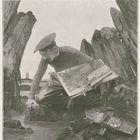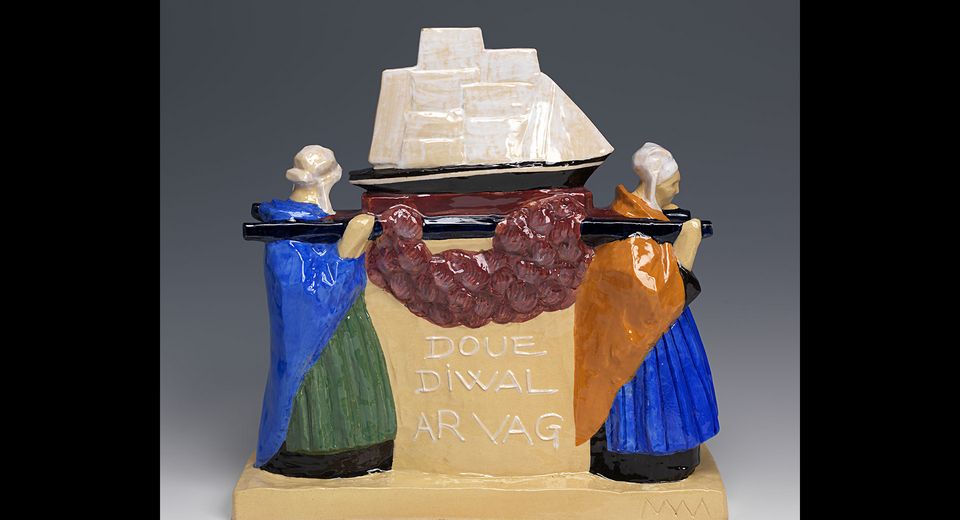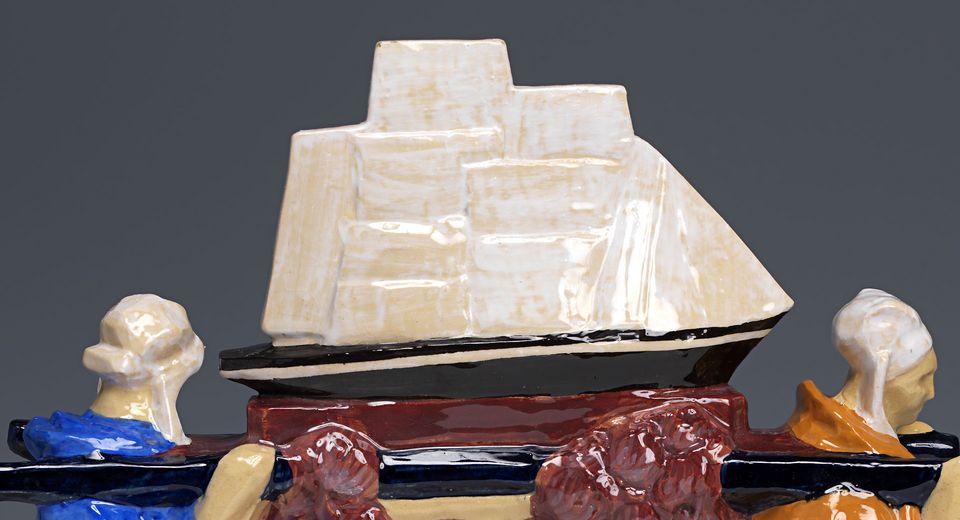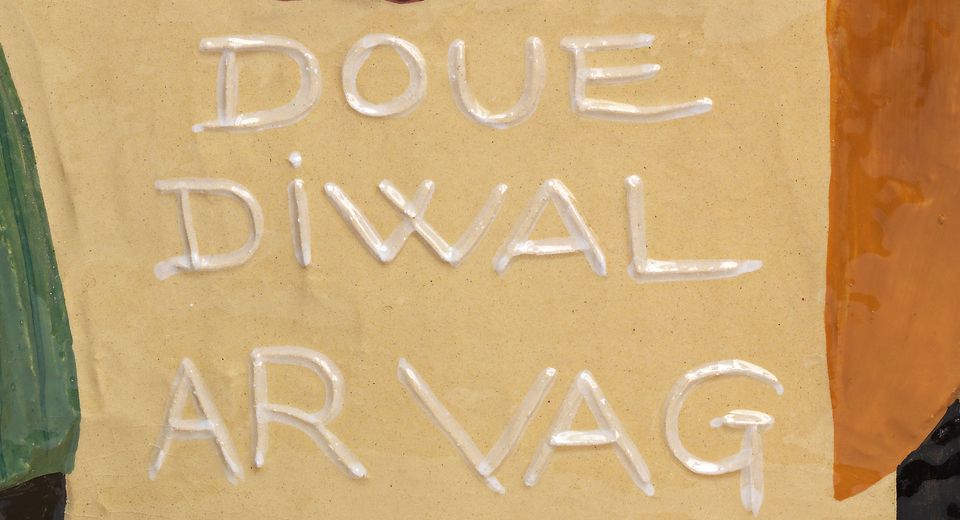Women bearing a votive offering
Port-Louis
This statuette depicts two women in traditional Trégor costume, illustrating the fondness that the artist Mathurin Méheut had for his native region.
The sculpture
Votive offerings were made by sailors in acknowledgement of the divine protection they believed they had benefited from during fishing expeditions that had ended in tragedy. Designed to be viewed from all sides, the statuette on exhibition at the Port-Louis Museum is 35.5 cm high and depicts two women in Trégor costume. Their dress can hardly be called exuberant: It comprises an apron, a large coloured shawl and a plain two-winged peasant headdress known as a toukenn, typical of the former diocese of Tréguier.
On the left side of the statuette, the inscription Doué diwal ar wag means “God guide the boat” or “God protect the boat”. There is a variant of the inscription on the right side: Doué diwal ar vag. The artist’s monogram and initials are engraved on the base.
The vessel, carried on a litter bordered with garlands of flowers, represents a Newfoundland fishing boat, the kind of three-masted schooner that set sail to fish for cod on Newfoundland’s Grand Banks. Such boats were blessed in Paimpol in the month of February, on the occasion of the “Pardon of the Icelanders”, a procession in which boats’ votive offerings and a statue of the Virgin Mary were carried to the port. The fleet then set sail on a campaign lasting between six and eight months.

Mathurin Méheut
Painter, illustrator, decorator
Mathurin Méheut was born in Lamballe (Côtes d’Armor) and devoted much of his life to the decorative arts. He was also a painter and illustrator and the National Maritime Museum conserves several of his drawings and engravings. Méheut was greatly interested in the maritime world and his body of work focuses on depiction of the professions of the sea and the Breton coast.
His collaboration with the Jules Henriot faïence factory in Quimper started in 1919, at the end of the First World War, during which he produced numerous sketches of the front.
Initially concentrating on tableware, his work as a ceramist went on to encompass sculpture and mosaic. Méheut also created three-dimensional works, either as unique pieces or in series. The artist was provided with a workshop at the Henriot factory and helped with the company’s brand image by illustrating its catalogues and advertisements.
He drew inspiration from Breton folklore and motifs and his style is characterised by simplification of masses, angular graphic design and the sheer monumentality of his compositions.
Collection highlight
The essential works to see during your visit to the Musée national de la Marine in Brest, Port-Louis, Rochefort, Toulon, and soon in Paris.



